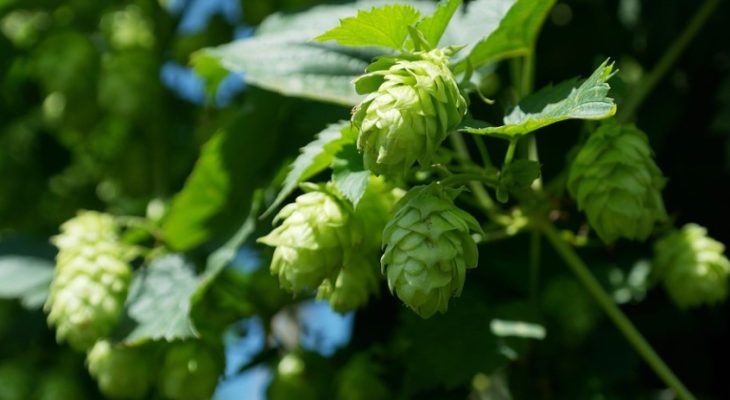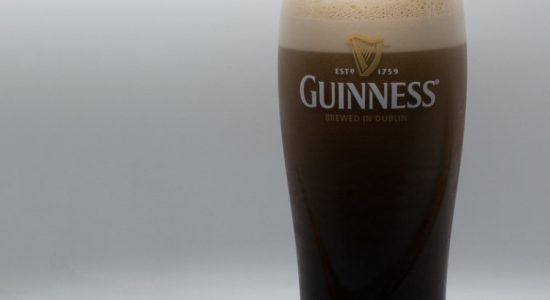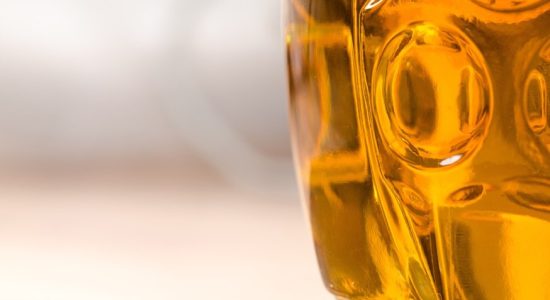This Is What Beer Tastes Like Without Hops

When it comes to brewing beer, many ingredients and factors make it taste great. Most people focus on the yeast and think that’s the main part, which it is. However, hops also play a huge role, so what does beer taste like without hops?
Beer tastes sweet without hops. Using hops in the brewing process adds to the bitterness of the beer. Without them, the beer would be entirely too sweet to drink for the majority of beer drinkers.
In this article, I will discuss why hops are so crucial to the taste of beer, how they are used in the brewing process, and the various types of hops and which beers they’re used in.
Hops Add Additional Flavors to Beer
In addition to providing a bitter element to beer, hops can add different flavors such as floral, piney, spicy, earthy, citrusy, woody, or fruity. This can vary depending on where the hops are grown. Different geographic regions produce different types of hops.
Various types of hops can be used in the brewing process according to Renegade Brewing.
- Noble hops: have a zesty, botanic taste
- English hops: have a earthen, zesty, sweet taste
- American hops: have a very bitter, citrusy, and bold flavor
- New World hops: have a tangy, fruity flavor
Additionally, IPAs are seen as a hoppier beer flavor. This is the type of beer that most people think of when they think of the word “hoppy.”
Types of Hopping
There are two types of hopping: wet and dry. These two types affect the overall taste of the beer. So, you can choose which one will help you achieve your desired outcome.
- Wet hopping: This type of hopping adds pickled hops at any point in the brewing process. This makes for a less strong hop flavor in the beer.
- Dry hopping: This type of hopping is the general form of hopping that is used. Hops are harvested and added to the fermentation process. This gives a more bitter beer flavor.
Typically, the later you add hops to the brewing process, the less bitter they are. So, beers with hops added later in the brewing process might be a favorite among those who don’t typically enjoy the bitter taste of beer.
Using Hops to Make Different Types of Beer
How hops are used will vary on the type of beer being brewed. For cream beers, aged hops are used to achieve this silky flavor. The beer itself doesn’t have cream in it, but the title comes from the smoothness of the beer once the hops are added.
When brewing a blonde beer, the hops are usually roasted beforehand to give it a slightly sweet flavor. Blonde beers have a balanced hop-to-grain ratio to limit bitterness.
Wheat beer, for example, is less bitter because of the small number of hops used during the brewing process. Wheat beers can have a slightly citrus flavor.
Using Salts With Hops in Beer
Different types of salt also affect the taste of your hops. For example, using Epsom salt will increase the bitterness of the hop.
However, using some salts can also help balance out the bitterness if you’ve used too many hops.
Gypsum and table salt can enhance the beer’s flavor, but they don’t really change the bitterness of hops.
Hold the Hops, Please
Even though to the average beer drinker, having no hops in a beer might be off-putting, there are beers out there that are made without hops on purpose.
These beers can be made without hops for a different flavor or used as a substitute due to allergies related to hops.
A beer without hops is called Gruit. A German beer called Aventinus is a very smooth wheat beer with no hops in it. The flavor has been described as tasting like bananas and raisins. This beer contains 8.2 % alcohol, so it’s not for the weak.
According to Draft Mag, The Boston Beer Company has a hopless Samuel Adams on the market that uses black leaves, green malted corn, citrus, and coriander in place of the hops. This beer has a chocolatey, spicy, and caramel flavor to it.
Beers without hops can have a sweeter taste. For more information on sweet beer, check out my YouTube video below.
Hops can typically be replaced with another substance. So, if you don’t want to use hops in your beer, you can swap them with other ingredients such as:
- Juniper Berries
- Rosemary
- Wormwood
- Orange Peel
- Chamomile
Most breweries you’ll go to won’t sell hopless beer just because it is not that common, especially in the United States. You’ll most likely have to buy hopless beer from a vendor if you want it.
How and Why You Should Use Hops in Beer
In my previous article “What Is a Sour Beer?,” I defined what hops were.
In addition to being an essential part of the flavor, hops can help the preservation of the beer.
Hops are added during the boiling process, which is crucial to the flavor. They add balance to beer and prevent it from getting overly sweet. Without hops, the beer would have a completely different taste. They have to be boiled, though, to achieve the desired flavor.
The longer they are boiled, the better because this gives them time to create that perfect balance between bitter and sweet.
Most beers, such as IPA and Lager, won’t boil for longer than 90 minutes. However, Ale is boiled for only 60 minutes.
To give your beer multiple dimensions, it is best to add hops gradually throughout the boiling process. You can add some in the beginning, middle, and end, enhancing your beer’s flavor.
Conclusion
Without hops, your beer will taste overly sweet. Hops play a crucial role in brewing by giving beer that bitter balance that people enjoy.
There are beers made without hops because some people prefer this for a sweeter taste. However, you can always substitute hops with other ingredients if you prefer.
Wet and dry hopping are the two types of hopping used when brewing beer. There are various types of hops, each providing different flavors and aromas to the beer.
Additionally, the type of salt used in the brewing process can also affect the hops’ overall flavor.






